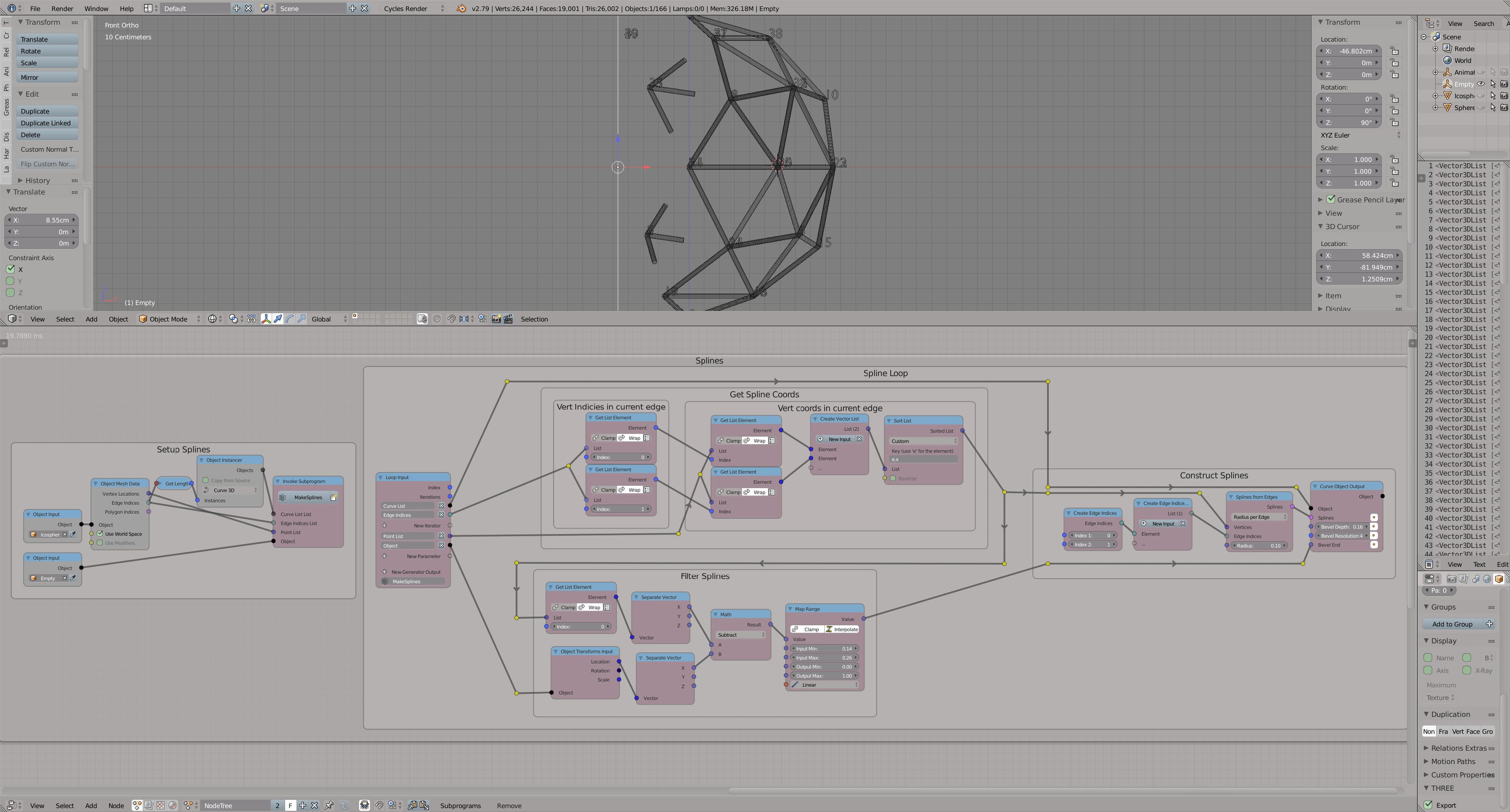I am trying to create a scene where a list of spheres are positioned onto the verts of a hidden icosphere, and as I move an empty through the icosphere, the visibility of the balls is toggled, and then as each sphere is revealed, splines will grow out to join them (probably using the Bevel End value), following the edges of the icosphere.
I've solved the problem of revealing the spheres as I move the empty, but I'm stuck on the splines part.
I've already created a version of the scene where all the splines are used to create a single curve object and the Bevel End value was used to grow all the splines at once.
Please see this video for what I have so far: https://www.dropbox.com/s/7n3nfqkm1czca2q/Blender_%20%5BD__Data_Dropbox_3D_T3DF__Personal_David%20G_AnimationNodes_bally-ball-plexus.blend%5D%2020_02_2018%2013_21_21.mp4?dl=0
What I want to have is each of the splines grow as their respective spheres are revealed. I know I could instance a bunch of curve objects, equal to the number of edges. In this case, though, all their origin points would be at the same place (0,0,0), and so an effector object wouldn't help, nor would I have the curve objects in any sort of spatial order with which I could use a falloff profile on their individual bevel ends.
I've seen that I can individually effect the splines of a single curve object, as shown below, but I haven't been able to figure out how to do that based on proximity to something else, or even in any particular order.
Have I made sense here?
Any ideas?
Thanks






